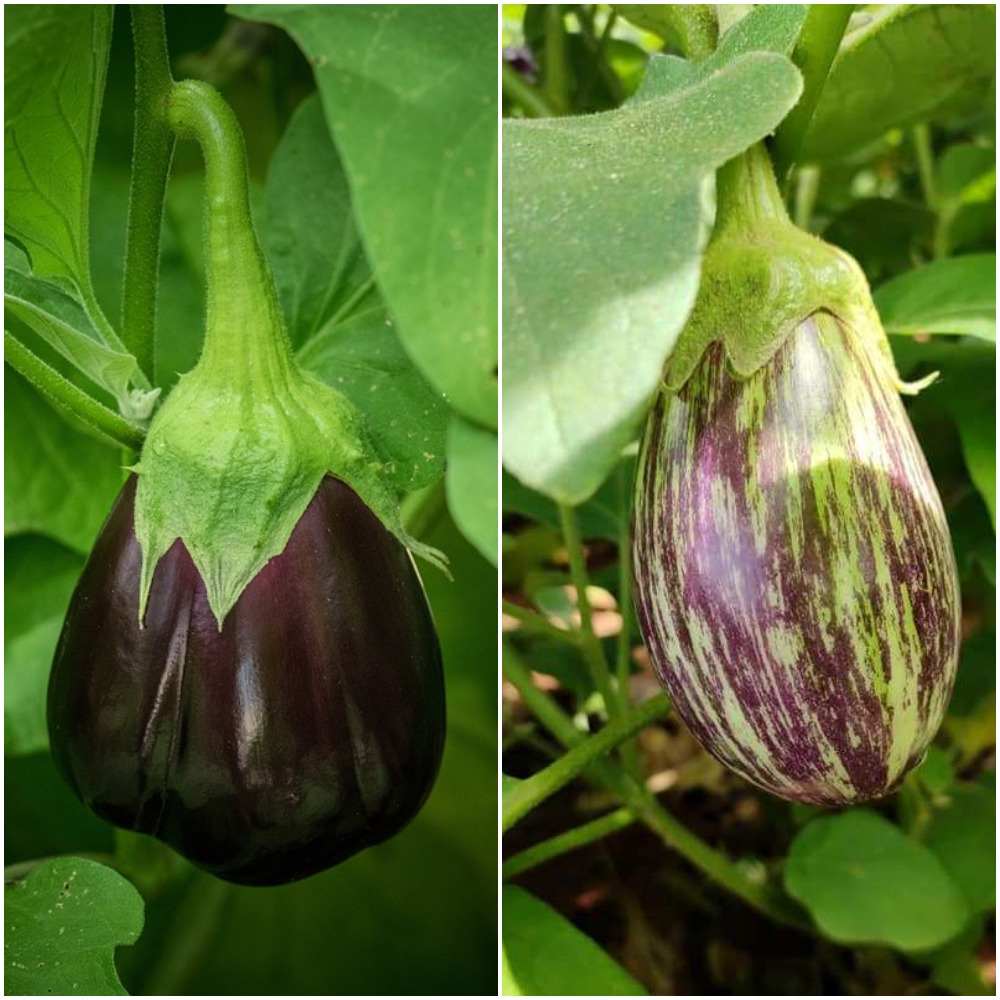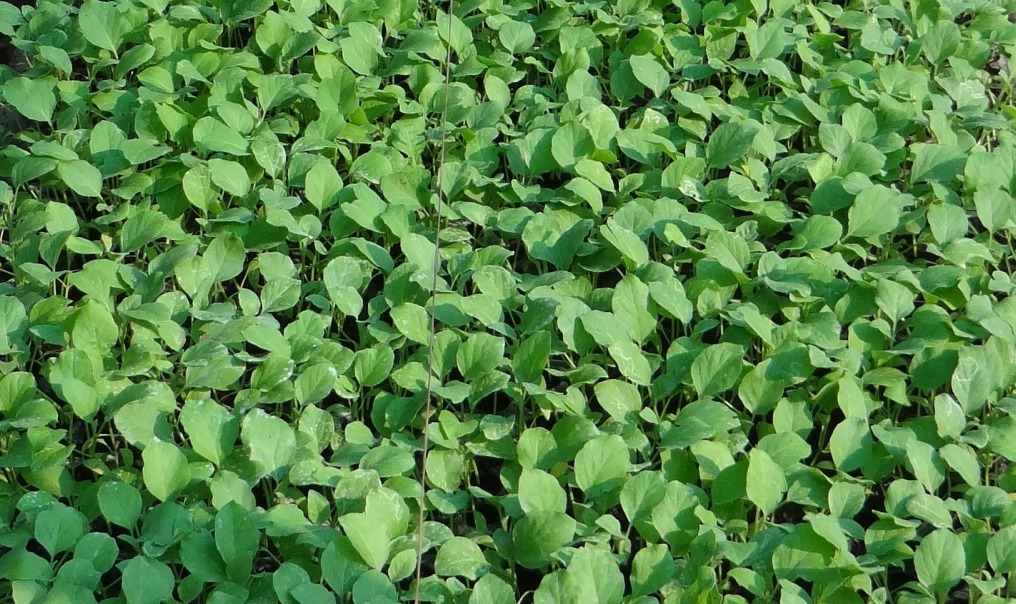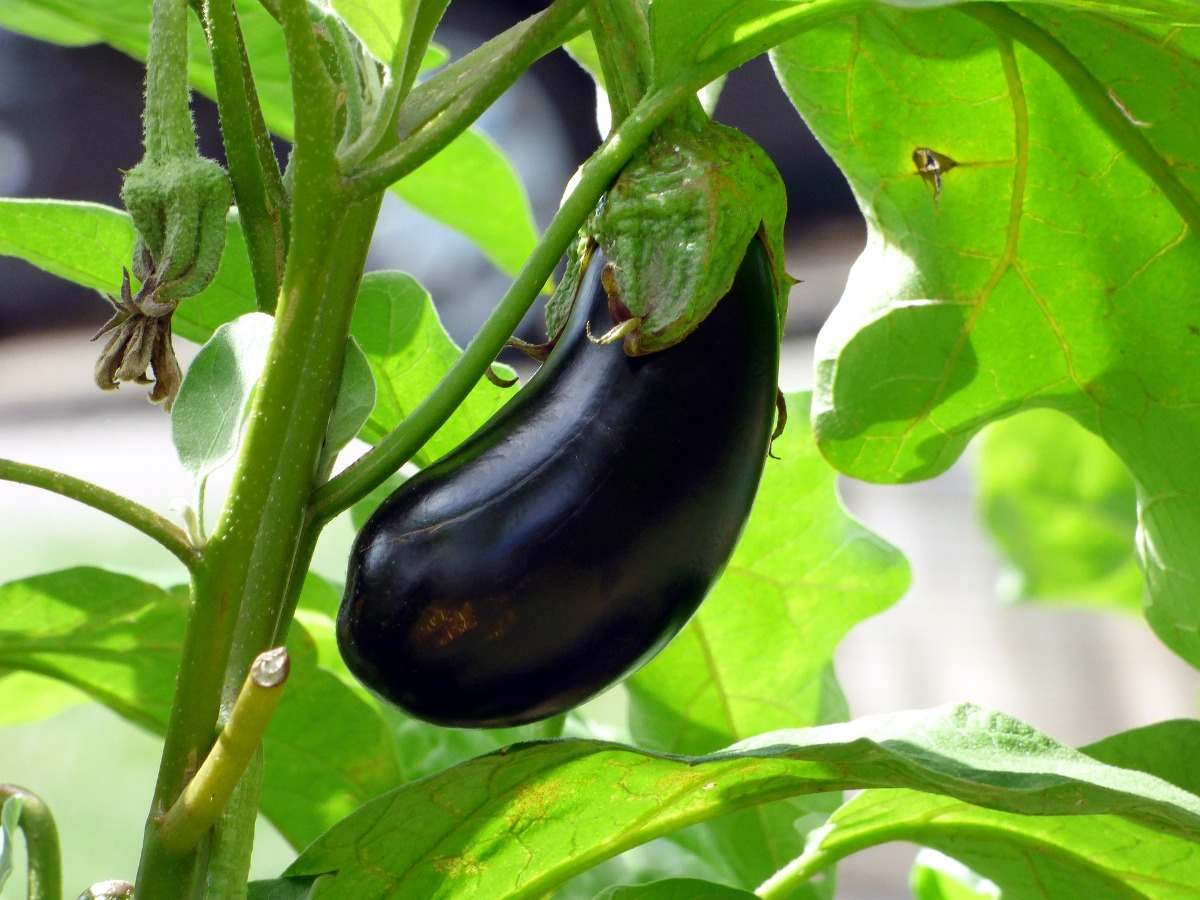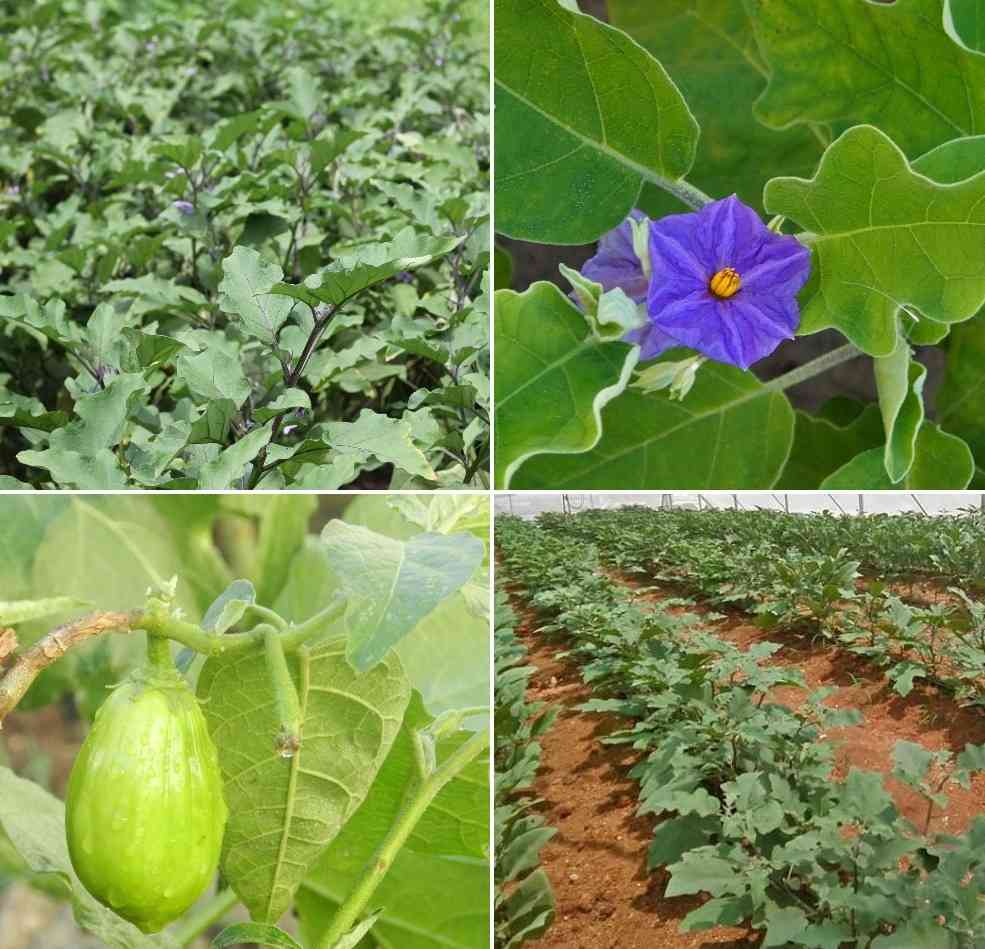Organic Brinjal (Eggplant) farming
Brinjal is one of the most common tropical vegetables grown in India and belongs to the family Solanaceae. Brinjal (Solanum melongeena L.) is also known as eggplant, aubergine, garden egg, baigan, badanekai, vangi, and vankaya. It is an important vegetable crop grown in India throughout the year. The Brinjal crop during its period is affected by a varied number of pests and diseases. Though the farmers apply chemicals to control and eradicate the pests and pathogens, the awareness of the ill effects of pesticides in the environment makes them go organic.
A step by step guide to organic Eggplant/Brinjal Farming
Brinjal is a beautiful, warm-season annual that is relatively easy to grow providing you have warm temperatures. The planting season must be consistently warm with daytime temperatures around 26°C and nighttime temperatures not falling below 18°C. Brinjal contains moderate sources of vitamins and minerals like phosphorous, calcium, and iron, and nutritive value varies from variety to variety. Organic cultivation is a form of agriculture that relies on techniques such as crop rotation, green manure, compost, and biological pest control.
Different varieties of Brinjal or Eggplant for organic farming
Brinjal or Eggplant varieties differ in size, shape, color, growth habit, and even maturation time.
Oval to oblong eggplants produces the large, oval-shaped, purplish-black color eggplants seen in most supermarkets. Most Brinjal varieties produce best in warm climates.
Japanese eggplants mature faster than oval eggplants, producing numerous long and slender fruits.
Small-fruited eggplants are the best type for compact spaces and some varieties produce fruits in attractive clusters which may be green, white, lavender, or purple.
Novelty eggplants contain unusual varieties from around the world, such as orange Turkish eggplant, green Thai eggplant, or egg-shaped white eggplant.
Brinjal Varieties in India are Pusa Purple Long, Pusa Purple Cluster, Azad Kranti, Pusa Purple Round, Pusa Hybrid-5, Arka Keshav, Arka Shirish, Pusa Barsati, Arka Kusumkar, Arka Navneet(F1), Pusa Uttam, Arka Navneet, Punjab Bahar, and Arka Nidhi.
Other varieties of Brinjal are;
Manjri Gota, Vaishali, Pusa Kranti, Arka Sheel, Pusa Ankur, Arka Neelkanth, Pant Rituraj, T-3, Dudhia, Swarna Shree, Swarna Mani, Swarna shyamli, Swarna Pratibha, Swarna Shobha, Arka Avnish, Arka Harshitha, Kuchia, Pant Samrat.
Characteristics of organic farming systems in vegetables
Management of Organic farming is focused on the whole farm system and its interactions with climate, environment, and social as well as economic conditions, rather than considering the farm as comprises of individual enterprises. The characteristics of organic farming include;
- Protecting the long-term fertility of soils by maintaining organic matter, soil biological activity, and careful mechanical intervention.
- Nitrogen self-sufficiency through the use of legumes, as well as effective recycling of organic materials, and including crop residues and livestock wastes.
- Maintaining the diversity of plant species as a basis for ecological balance and economic stability.
- Supplementing crop nutrients, where necessary, by using nutrient sources which are made obtainable to the plants indirectly but the action of soil microorganisms and chemical reactions of the soil.
Soil and climate requirement for organic Brinjal farming
In case if you miss this: Organic Apple Farming.

Brinjal is a warm-season crop and it requires a long warm growing season. It is very susceptible to frost. Brinjal should be planted in full sun and needs ample amounts of water. They like fertile and well-drained soil with plenty of organic matter. A daily mean temperature range of 13-21°C is most favorable for its successful production. The growth of the Brinjal crop is severely affected when the temperature falls below 17°C. It can be successfully grown as a rainy and summer season crop. It is a hardy crop and is cultivated under a wide range of soils. Since a long duration crop with high yield, well-drained and fertile soil is preferred for the Brinjal crop. Brinjal crops are grown in sandy soils yield early and those grown in clayey soils yield more. Well-drained soil is rich in organic matter with a pH level of 6.5-7.5.
Planting procedure of Brinjal seeds
The seeds of Brinjal are sown on nursery beds to raise seedlings for transplanting in the field. Start seeds 8 to 12 weeks before the last frost or get seedlings from a local source, then plant them after the soil has warmed. Use black plastic mulch to heat the soil if your area has long, cool springs. Set plants about 18 to 24 inches apart in raised beds or double rows 2 to 3 feet apart. Apply a balanced organic fertilizer every 2 weeks throughout the gardening season.
Raised beds are required to avoid the problem of waterlogging in heavy soils. In sandy soils, though, sowing can be taken up in flatbeds. Raised beds of size 7.2 x 1.2 m and 10 to 15 cm in height are prepared. About 70 cm distances are kept between two beds to carry out operations of watering, weeding, etc. The surface of the beds must be smooth and well leveled. Well-decomposed FYM or leaf mold can be mixed with the soil at the time of bed preparation. To avoid mortality of seedlings due to damping off, the drenching of the beds with Bavistin about 15-20 g/10 liters of water is effective.

Sowing should be done thinly in lines spaced at 5 to 7 cm distance. Seeds are sown at a depth of 2 to 3 cm and covered with a fine layer of soil followed by light watering by water can. The beds should then be covered with dry straw or grass or sugarcane leaves to maintain the required temperature level and moisture. The watering must be done by water can as per the need till germination is completed. The cover of dry straw or grass is removed immediately after seed germination is complete. During the last week in nursery, the seedlings can be hardened by slightly withholding water. The seedlings are ready for transplanting within 4 to 6 weeks of planting when they attain a height of 15 cm with 2-3 true leaves.
Brinjal seed rate and planting distance in organic farming
The Brinjal seed rate can vary according to the type of seed, where pure line varieties required are almost 500 – 750 g/ha, and the hybrid requirement is about 250 g/ha. The seed rate depends on the type of sowing and the requirement per hectare ranges from 140 to 200 g for seed trays, 500g for seedbeds, and up to 3kg in case of direct seed sowing.
The spacing depends on the variety (size and spread and bearing period) soil fertility. Spacing mainly depends upon the type of variety grown and the season of planting. Usually, the spacing for the bushy non-spreading type must be 50-60 cm in both the ways and for spreading varieties row to row distance should be 75 to 90 cm and plant to plant distance is about 60 to 70 cm. planting is done preferably in the evening and irrigation is done immediately after transplanting. Pre-soaking irrigation is given 3 to 4 days before transplanting. At the time of transplanting, the roots of the seedlings must be dipped in a solution of Bavistin (2g/liter of water). Transplanting should preferably be done in the evening time.
Nutrient management in organic Brinjal farming
Nutrient management is a key factor for Organic farming systems. In organic farming systems, there is no place for synthetic chemicals therefore use of chemical fertilizers is abandoned. In organic cultivation, nutrient management depends on biologically derived nutrients through the recycling of on-farm inputs. The quantity of biomass removed for human food and fiber, cattle feed, or firewood from an organic farm must be replaced with any other bio-waste on the farm. The use of organics in vegetable production must be practiced. It does not involve the use of any particular organic source of material or the use of the single organic farming practice. The various types of organic farming such as natural farming, nonchemical farming, etc can be followed by adopting a variety of methods of organic farming.
Under organic farming, nutrient management is of importance as the soil fertility has to be not only maintained but also to be improved. All synthetic fertilizers are prohibited in organic farming and a healthy biologically active soil is the source of crop nutrition. A live, healthy soil with proper management and effective crop rotation can sustain optimum productivity over the years, without any loss in soil fertility. The sustenance of yields is linked to the capacity of cycling and the manipulation of essential nutrients. The capacity to produce usable biomass depends upon the adequacy and balance of macro and micronutrients in the Brinjal plant. Organic sources of nutrition contain all the essential nutrients and the application of an appropriate quantity of organic manures can not only sustain the yield of vegetable crops but can also enhance it. The idea of nutrient supplementation in organic farming is to replenish the requirement of nutrients through the use of permitted inputs.
There are several organic sources of nutrients and among them, green manures, compost, vermicompost, organic cakes, biofertilizers, and biodynamic preparations are very important. In an organic farming system, efforts are made to minimize losses of nutrients and maximize the input use efficiency. If you prefer, use organic fertilizer for Brinjal farming like blood meal, well-rotted manure, cottonseed meal, or bat guano.
Irrigation requirement for organic Brinjal farming
You may also check this: Hydroponic Drip System, Types, Advantages.

There should be an adequate and timely supply of water which is an important aspect of good Brinjal production. It is critical to irrigate the crop for good growth, flowering, fruit set, and fruit development. In plains, the Brinjal crop needs to be irrigated in 3 or 4 days during summers and every 7 to 12 days during winters. The Brinjal field must be irrigated regularly at regular intervals to keep the soil moist during frosty days. The early phase requires copious irrigation and if the plant is irrigated excessively during the seedling stage, it might cause damping-off disease. If there is stagnant water during the vegetative phase, it leads to soil-borne diseases that result in poor plant growth. Drip irrigation is widely used as it increases the irrigation potential by optimizing available irrigation water. Timely irrigation is important for high yields of Brinjal crop.
Brinjal pests and disease control organically
Brinjal problems and pests can occur from time to time when growing Brinjal; however, with the proper care, they can generally be prevented.
Use Amrut Jal or any other organic liquid soil conditioner or fertilizer every 10-15 days. During flowering increase the frequency and then use it once every 7 days. When you grow Brinjal in containers you need to make sure the plant gets enough nutrients at all times. Do not forget to add extra compost to pot at regular intervals. Adding about 3 to 4 liters of compost for each plant every 40-50 days will keep the plant healthy. And, always add compost below the mulch layer.
Mealybugs and Aphids are the major pests that you have to face when you grow Brinjal. So check the plant regularly below the leaves. In case you find them remove them with water jet and you can also use a neem spray or any broad organic pesticide like diluted cow urine to get rid of aphids. For mealybugs in crops take a cotton ball dipped in a methylated spirit to wipe them off. During fruiting plants can get infested with borers particularly if the temperature is low. Spraying once a week with Panchagavya keeps borers away and it is a good idea to keep all your Brinjal plants away from each other so that borers cannot spread easily.
A good organic solution is to apply nematodes to the Brinjal planting area. The nematodes will attack and then kill the flea beetle larvae and eggs in the soil. The best method to prevent flea beetles is to get them before they have a chance to hatch and spread. Nematodes will get the flea beetles before they even have a chance to jump on your Brinjal.
Organic pesticide sprays
For heavy infestations of flea beetles, you can use a liquid rotenone or pyrethrin spray that is effective for getting rid of flea beetles on Brinjal. Though these sprays are organic, they are still a pesticide and can affect the good insects if used irresponsibly.
Harvesting and yield of Brinjal
Brinjal is harvested when the fruit attains proper size, good color, and before the ripening stage. The fruit has a glossy appearance, attractive bright color to fetch good prices in the market. Brinjal is ready to be picked up in about 15 to 20 days from the formation of fruit. Press the fruit slightly to check if it is mature and it is soft to touch then it probably will grow a little more. If it is hard to touch it has already matured and you need to harvest your Brinjal when it is no softer to touch. To harvest do not pull it and it will not come off and will damage the plant. Use garden scissors to cut off Brinjal from the plant. The fruits are harvested when they attain full size and color but before the start of ripening. Tenderness bright color and glossy appearance of the fruit is the optimum stage of harvesting of Brinjal fruits. When the Brinjal fruits look dull, it is an indication of maturity and loss of quality. The Brinjal crop yield varies from season to season, variety to variety, and location to location. However, in general, 250 to 500 quintals/hectare of healthy fruits of Brinjal can be obtained.
Commonly asked questions about organic Brinjal farming
In case if you like this: Vegetable Farming Business Plan for High Yield and Profits.

Why is my eggplant dying?
Eggplants mainly suffering from over-watering and drought eventually die. Over-watered eggplant roots rot, which prevents plants from taking up water and then causes wilting. Under-watered Eggplants also wilt, grow poorly and develop pithy fruits.
How can we protect Brinjal plants from insects?
Destroying the infected plant leaves along with insects at the initial stage can minimize the infestation to some extent. Use organic insecticides with carbaryl or Malathion to control the pest effectively.
Why is my eggplant yellow instead of purple?
The Brinjal fruit is over-ripe. Several varieties of eggplant, particularly those lighter ones, will turn yellow when the seeds are fully mature. Eggplants are prone to sunburn, especially if they’re growing in a south- or west-facing bed. Those yellow patches can be sun damage.
Why Brinjal is called as king of vegetables?
The beautiful rich and glossy purple surface and meaty yet highly nutritious white inside of the Brinjal fruit has helped it earn the title of “The King of Vegetables”. Brinjal is a part of the nightshade which means that the fruit along with the flower of the Brinjal plant is edible.
What are organic pesticides for Brinjal?
Use organic pesticides in a combination of Carbaryl (0.1%) or Cypermethrin (0.5ml/liter of water) after transplanting to control the pest.
In case if you are interested in this: How to Make Money from Organic Farming Business.